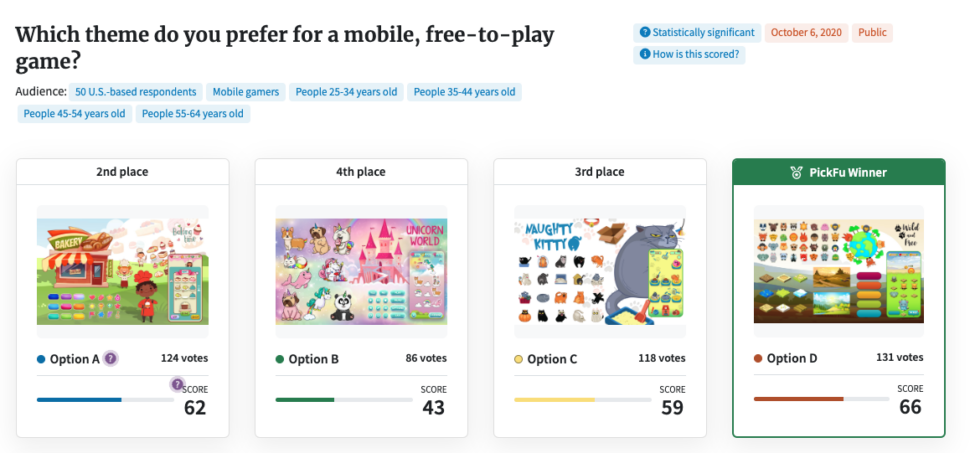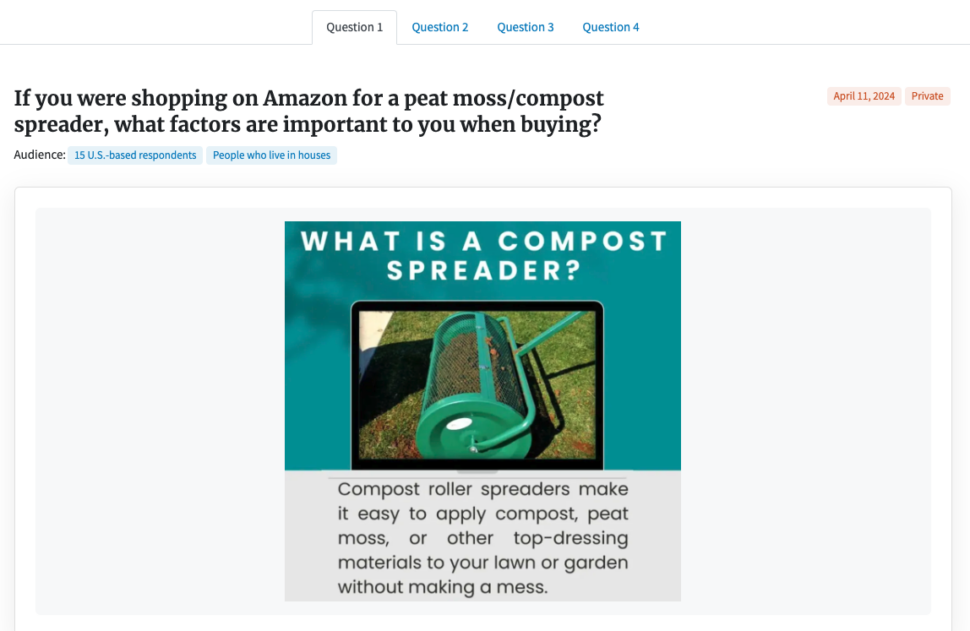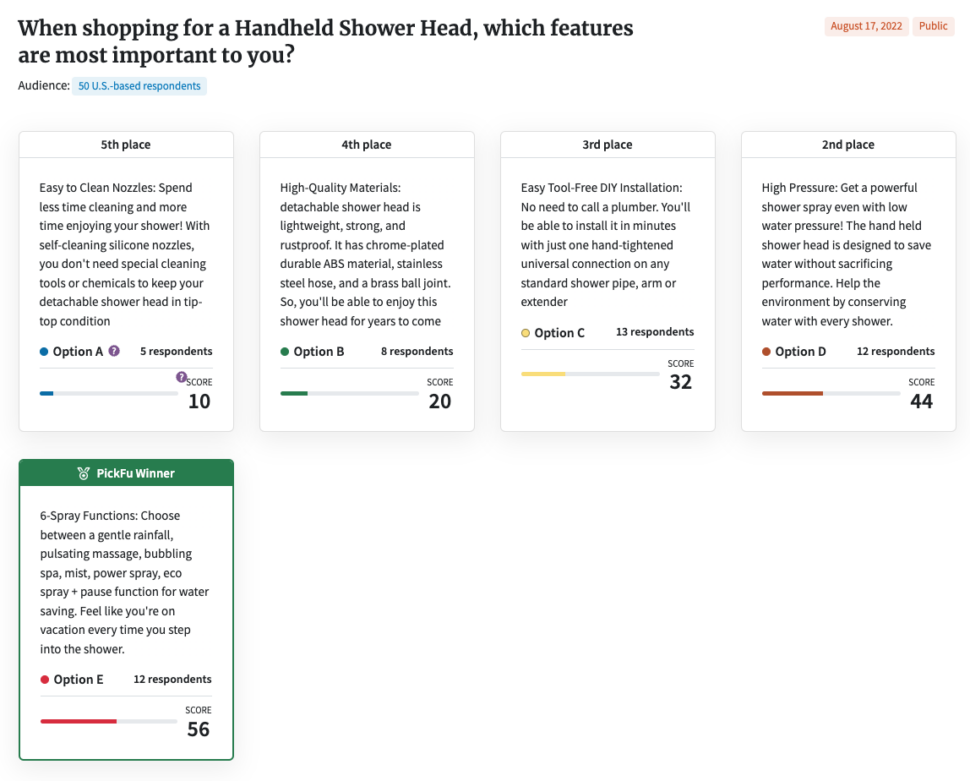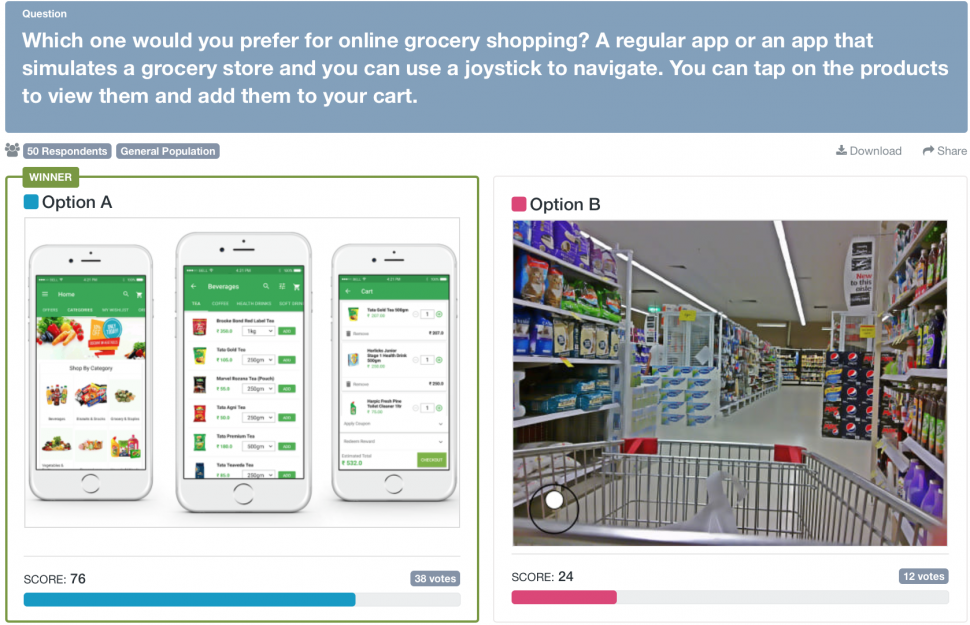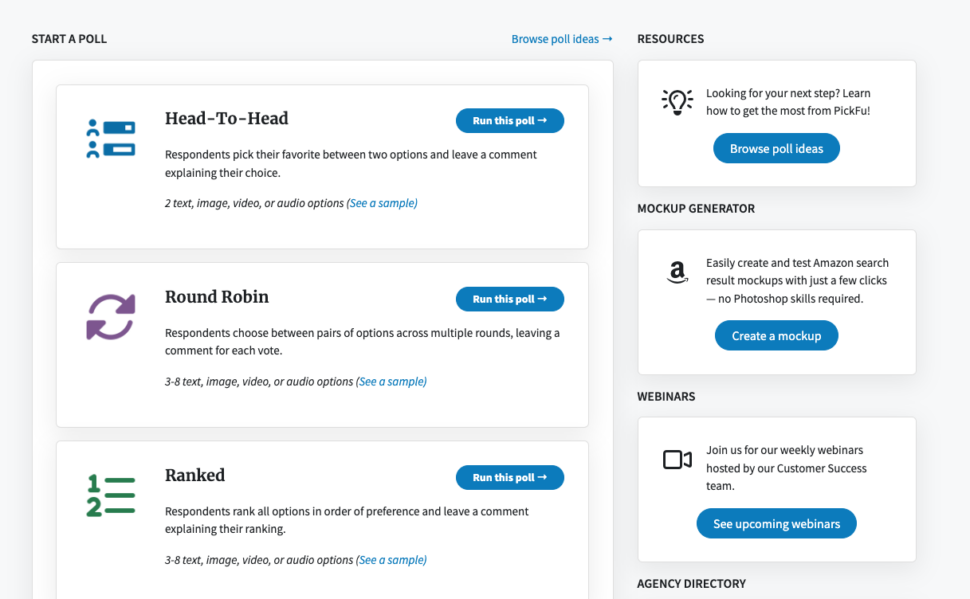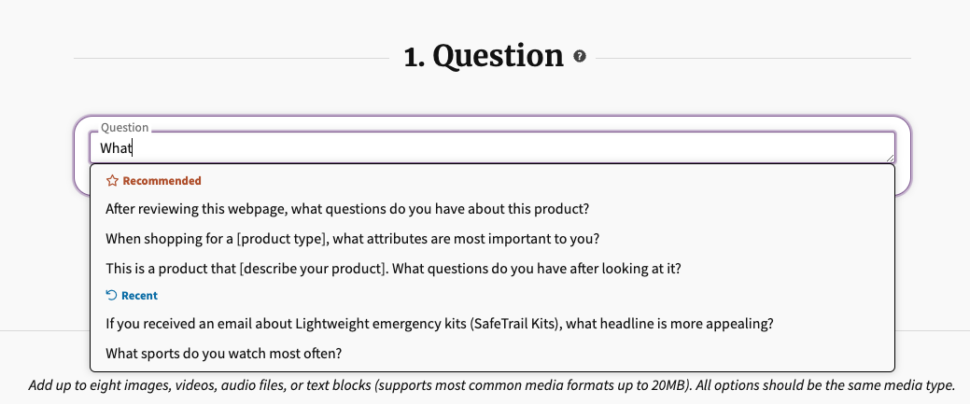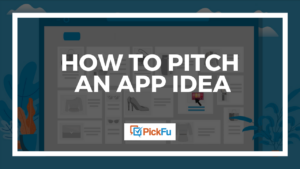Do you like getting things right the first try? If so, you’ll want to test your product concepts with real people before their official launch.
Concept testing in new product development is an ideal way to see if your ideas are as great in real markets as they are in your head. Using in-depth questionnaires and user testing, you can see how potential customers feel about your new product ideas or new concepts — before you invest money into making them a reality.
Concept testing is a type of user testing that evaluates new product ideas using feedback from potential customers. A product manager, user researcher, or someone in a similar role usually uses this type of research method as part of their go-to-market strategy in the early stage of the product development process.
Although concept testing can be done anytime, it’s best prior to the product launch to identify problems or improvements before investing in manufacturing, marketing, distribution, etc.
In general, idea validation lets you predict how well a new product will be received by your target audience. You can use it in broad strokes to generate original ideas for products, or focus it to evaluate a specific concept, such as to validate SaaS ideas.
The methodology may vary, but surveys and questionnaires are the most popular to get opinions directly from potential customers’ mouths. Proof of concept testing works best with reliable data and metrics about issues like usability or user experience. It’s also common to ask your target customer base about their pain points, which might inspire new features or additions shoppers want.
Concept testing is closely related to market validation, which tests a new product’s viability in whichever market you pick. Both give you valuable insights on various aspects of product design, marketing, and other areas like packaging or even app name ideas.
Examples of concept testing for product validation
To see for yourself how concept testing works, let’s look at some examples. This pre-launch hiking app ran their test with Pickfu to predict interest among its target audience.
As you can see, this concept test for TrailTutor was simple and quite cheap. The video explains how the product will work, including its best features, and respondents are asked to rate its appeal on a sliding fader with opinions in their own words.
The advantage of doing concept testing in the early stages of the development cycle is to minimize costs and waste. Sure, the video wasn’t free, but it was a lot cheaper than releasing a prototype and waiting to see how the market reacts. With concept testing, you can implement any new changes or ideas from your feedback before the proper product launch and rollout — or scrap the idea completely before investing too much.
Even if you’re already set on a new product idea, concept testing can help you optimize it according the preferences of your target audience. This mobile game ran a PickFu test for its design theme, with five options set in 10 head-to-head match-ups.
Not only was a clear winner chosen out of the round-robin concept testing, but also you can see the data organized to show which options won out of each individual match-up. This kind of data, straight from potential customers, can help you design the perfect product right from the start without wasting resources on do-overs and late additions.
Benefits of concept testing
Concept testing provides several benefits to your business, including:
- Actionable insights taken directly from your customer base
- A more focused direction for your marketing campaigns – this can be especially helpful for highly competitive areas like an app marketing strategy
- A cost-effective method of testing, especially compared to the savings of making revisions later in the product development cycle
- No waiting for product launch to get customer feedback
- Identifying problematic areas you sometimes can’t see because you’re too close to the project — the advantage of an outside perspective
When to do concept testing during the product development process
Concept testing is most effective during the ideation phase of the development cycle. This lets you fix problems before the product launch, which saves you time and money on redesigns, updates, relaunches, or even recalls. You can also use rapid research to avoid delaying the launch if you’re on a tight schedule.
That said, you can essentially do concept testing at any point, even with products that have been around for years. In fact, if you plan on adding new features to a product, some quick product testing can help you narrow down the specifics and give your customers what they really want. The concept testing process works just as well for product features, price points, new variations, or any other additions to existing products.
Product concept testing methods
Traditionally, focus groups used to evaluate new and different concepts for products, but now most testing is done online.
In particular, survey questions are the go-to method: they’re simple, relatively cheap, and customizable, letting you get right to the heart of the matter – and directly to your audience.
The most effective concept testing survey questions either use the Likert scale or let the respondents answer in their own words. The Likert scale is the technical name for presenting a statement and offering respondents multiple choices for the intensity of how much or little they agree, e.g., “strongly agree,” “neutral,” etc.
The Likert scale is most effective for empirical, data-based surveys, while open-ended questions where the respondents are free to answer in their own words are best for qualitative evidence and discovering new ideas.
Technically speaking, concept testing surveys are divided into four categories. (Don’t let the names scare you; their meanings are easy enough to grasp!)
- Monadic testing — one product concept is tested on its own in isolation.
- Comparative testing — two or more concepts are tested simultaneously so the respondent can compare them side-by-side.
- Sequential monadic testing — multiple product concepts are tested, but are shown one-at-a-time so the respondent can focus on each individually.
- Protomonadic testing — a combination of sequential monadic testing and comparative testing; multiple product concepts are shown first individually and then together
Which methodology you use depends on what you’re testing. If you have a strong concept and want to see if it works, there’s no need to compare it to other ideas (except maybe your competition).
However, if you have a few different options for your product and aren’t sure which to use, you’ll need another concept testing method. In general, if you’re comparing different visuals, comparative testing is better than sequential monadic testing so the respondent can see them both at the same time.
To help you decide which type of test is right for you, here are some examples of concept testing categories.
This PickFu poll about gardening equipment is an example of monadic testing. There’s only one product that the participant needs to think about. This poll works well because it asks an open-ended question, encouraging the respondents to elaborate on their opinion and provide in-depth commentary on why they feel the way they do.
This type of concept testing is ideal for the early stages of product development as a way to collect new ideas and suggestions the design team might not have considered.
Our second example is a PickFu poll about shower heads that demonstrates comparative testing. Five concepts are presented and respondents are asked to rank them in order of importance. Comparative testing works well for narrowing down options when you’re unsure which direction to take, and using ranked polling gives a broader and more complete picture of your target audience’s preferences.
How to run a concept testing survey on PickFu
PickFu is popular for its quick and easy user testing, and that includes concept testing. You have a lot of flexibility with PickFu user tests, whether asking an open-ended question to see how your target customer base thinks, or presenting multiple options with accompanying visuals to see which one potential customers like best. You can even do prototype testing with PickFu to optimize existing products, but for now let’s stick with pre-launch concept testing.
Below, we outline how to create a concept testing survey in four steps. You can use these instructions whether you’re asking an open-ended question or providing multiple options.
1. Choose a single concept to test
Technically, your first decision when creating a PickFu poll is choosing your industry, but the first specific choice you have to make is knowing what to test.
Tests, polls, and questions are most effective when they focus on a single concept at a time. Note that this doesn’t mean a single option — you can (and sometimes should) present multiple options so the respondents can compare them against each other. What “single concept” means is having your test focus on one main attribute, as opposed to testing two different variables at the same time (like packaging color and price point simultaneously).
If you’re not sure what to test, but still need insight from your potential customers, try asking an open-ended question. It’s perfectly acceptable to ask people what they look for in a certain product and let them answer freely — in fact, this could be advantageous to discovering new features or ideas your team hadn’t come up with yet.
Be sure to consider your target market and what your competition is doing. Concept testing can inadvertently further your market research by revealing pain points that competing products haven’t solved yet. In fact, market research could be a smart first step before you even start the product ideation phase. You can learn more from our guide on how to do market research for an app.
2. Choose a template, if applicable
PickFu makes it easy to create concept tests and polls with a wide array of templates. These pre-existing forms only require you to fill in your own information and add your own media — the structure and process are already in place before you even start.
Depending on what you’re testing, you may want to review the pre-built poll templates we have available to see which will work best for your needs. Here are some specific recommendations for early-stage concept testing templates:
- Product research
- Product idea validation
- Quick product concept validation
- Quick product concept competition
- Product design iteration
3. Fill out your questionnaire
Once you’ve chosen your template or started building your own poll or survey from scratch, all you have to do is fill in the blanks. The wording doesn’t need to sound Shakespearean – your respondents care more about the concept than your writing. That said, you still want to double-check your grammar and spelling so your poll is presentable and your phrasing is clear and easily understood.
The most important thing about writing a poll question is removing your bias so that your Survey participants can answer honestly. You want to avoid phrasing that suggests one answer over another or inhibits the ability to choose freely. If you need some help, read our guide on how to write unbiased poll questions.
If you didn’t select a template, you’ll also need to choose your question format from a variety of options: Head-to-Head, Ranked, Open-Ended, Click Test, Round Robin, or Star Rating.
If you’re including images in your poll, be sure to use high-quality files. Showing images that are hard-to-see, blurry, or low-quality will impact your results, whereas crystal-clear images keep the focus on the concept itself.
4. Choose your participants
Choosing who answers your polls is crucial to concept testing. The goal is to hone in on your target audience as much as possible — after all they’re the ones who will one day buy your product. You don’t want your data corrupted by consumers who would never buy your product; what good is an opinion on a coffee packaging from someone who doesn’t drink coffee.
Luckily, PickFu lets your customize your audience so you can find a perfect fit. For starters, you can filter from general demographics like age, income, or education. But PickFu lets you delve even deeper with attributes like hobbies, interests, shopping behavior, and more. You can even target by country to test your product in markets across the world.
For example, if you’re testing a mobile game, you can filter respondents by role-playing game fans (or other genres). If you’re an Amazon seller, you can filter by Amazon Prime members only. You can see a complete list of options on our audience targeting traits.
Last, you choose the sample size from options of 15, 30, 50, 100, 200, or 500. While some businesses might require a larger sample size, we typically recommend the 50-100 range as a solid, reliable number for most tests.
You can set up a test right now and your responses will start pouring in right away. All you need is your product idea.
Start by signing up for PickFu for free, and you can launch your first poll in just a few minutes!

